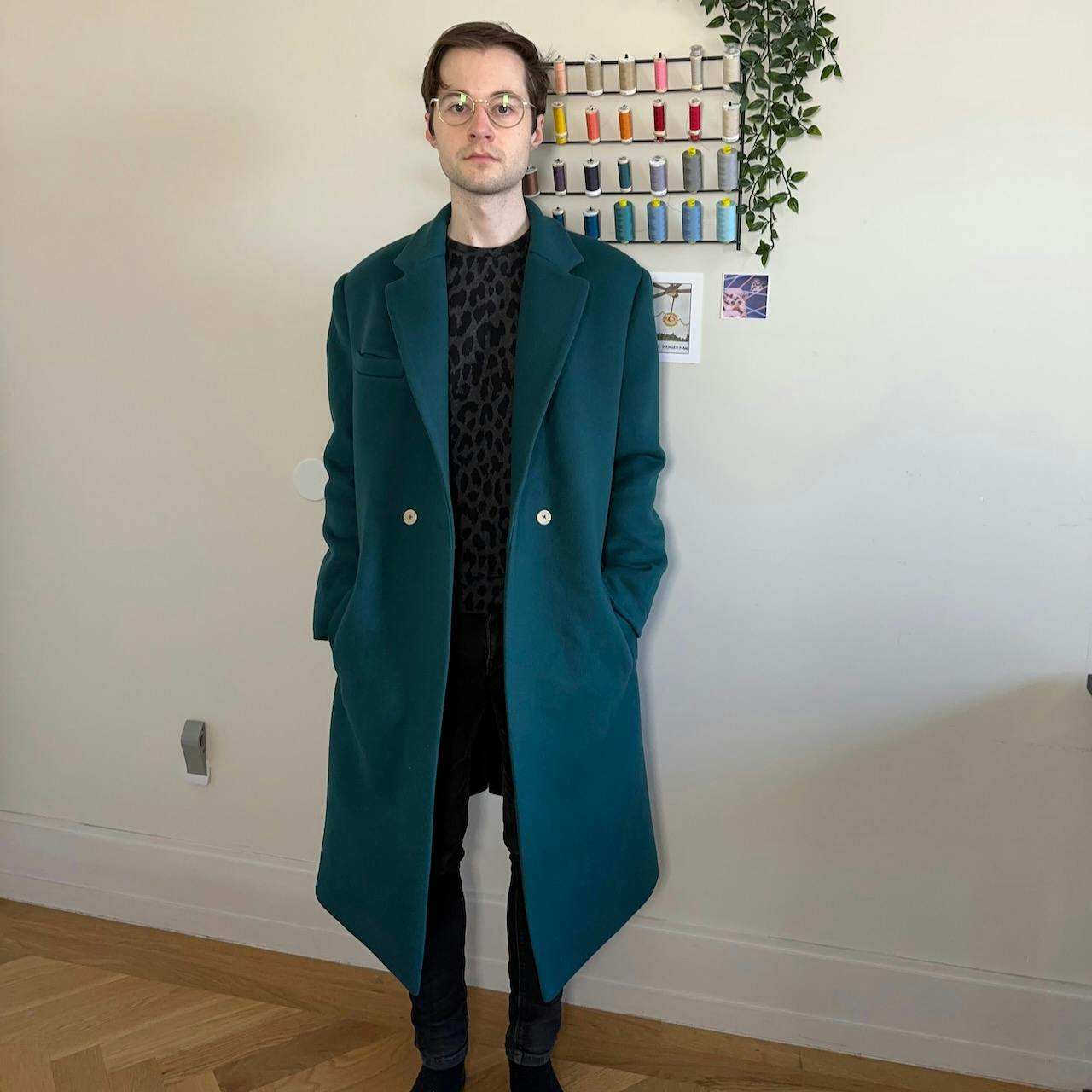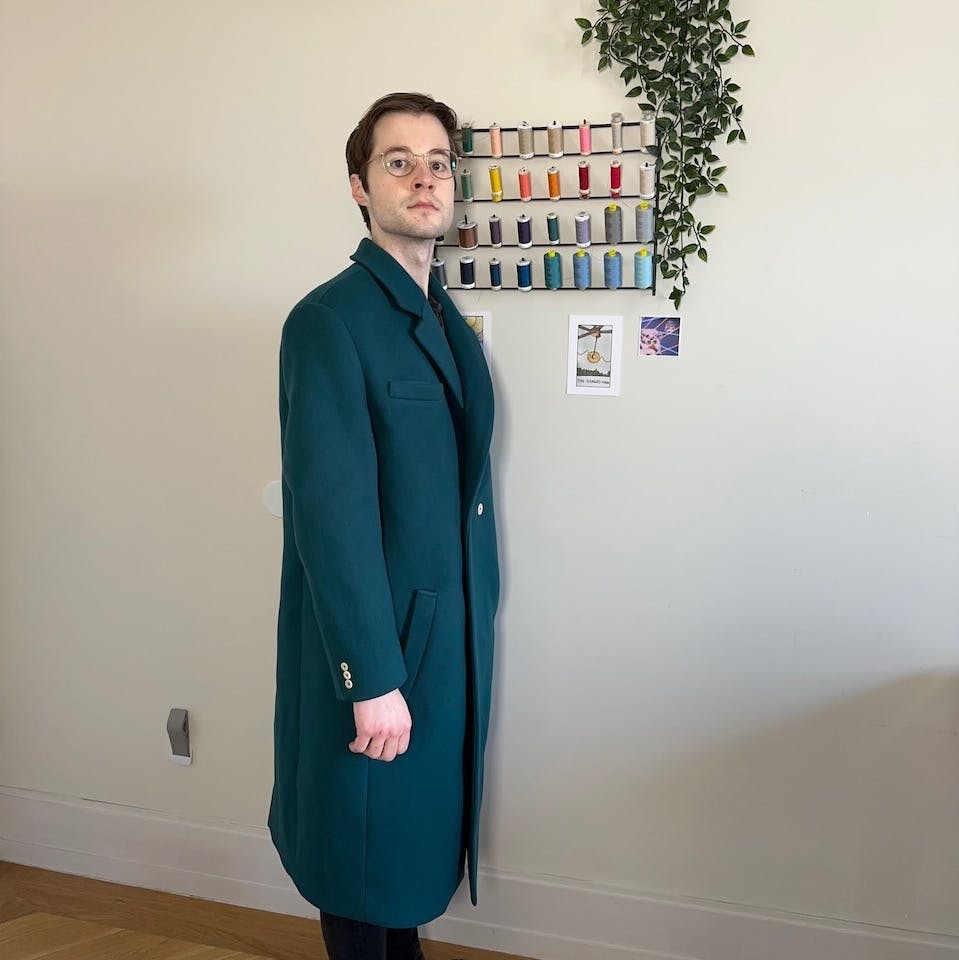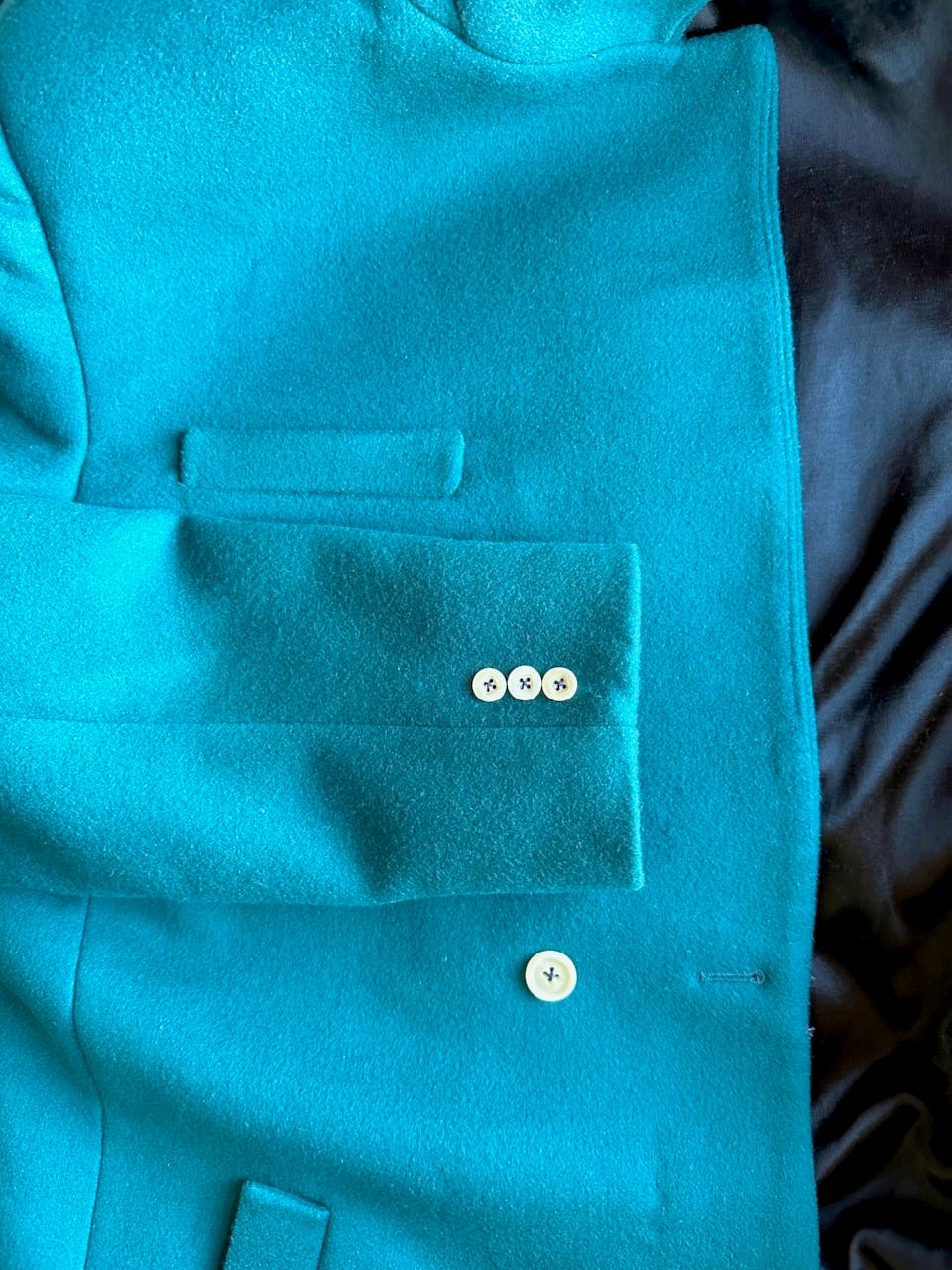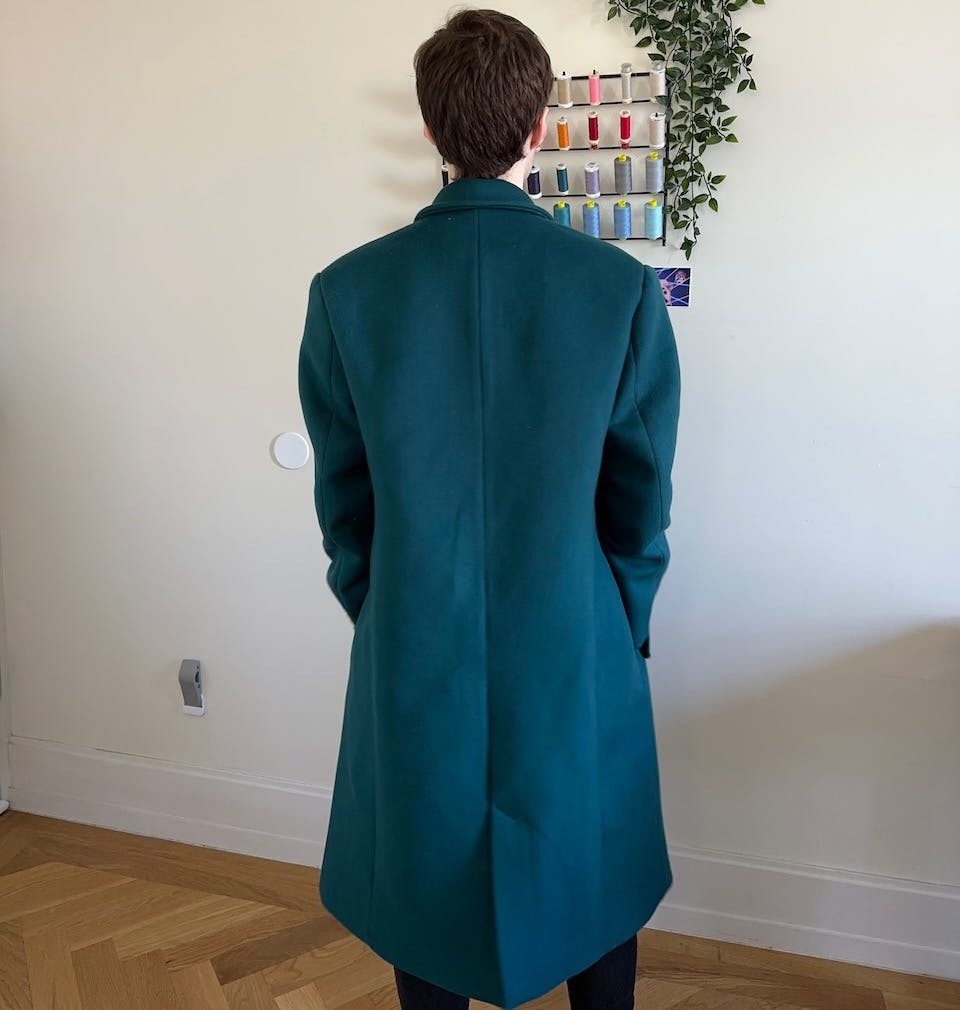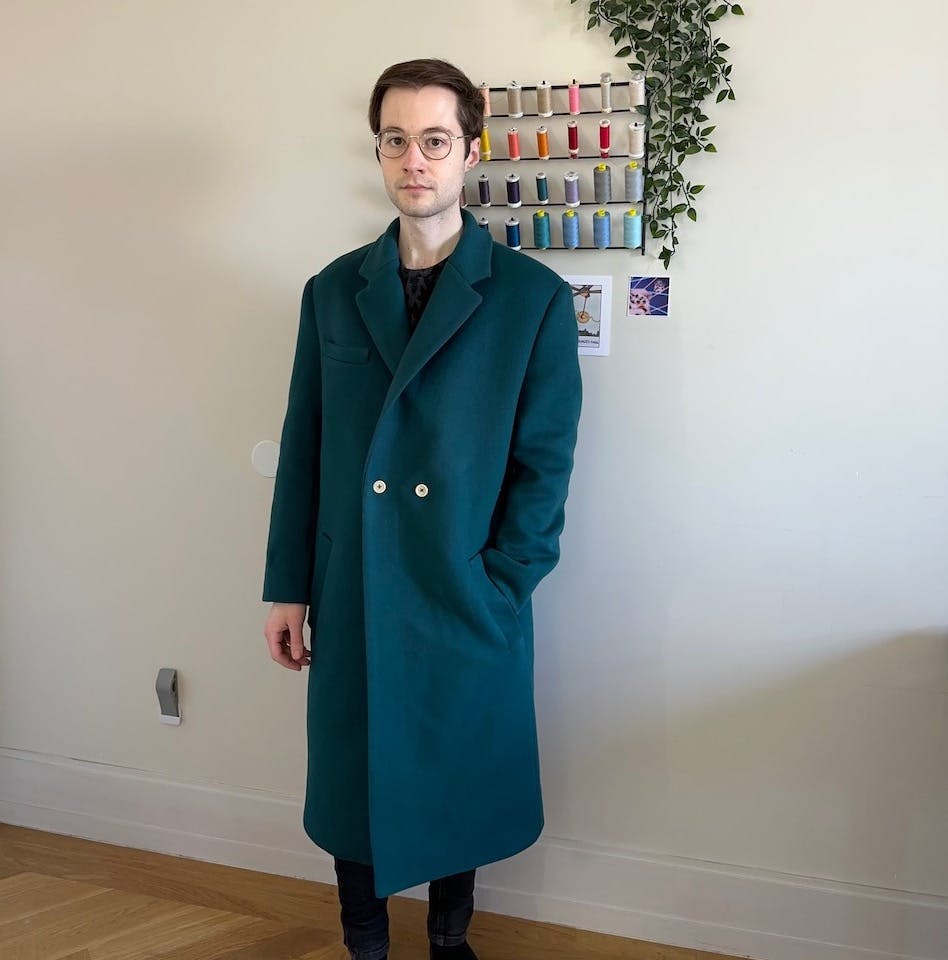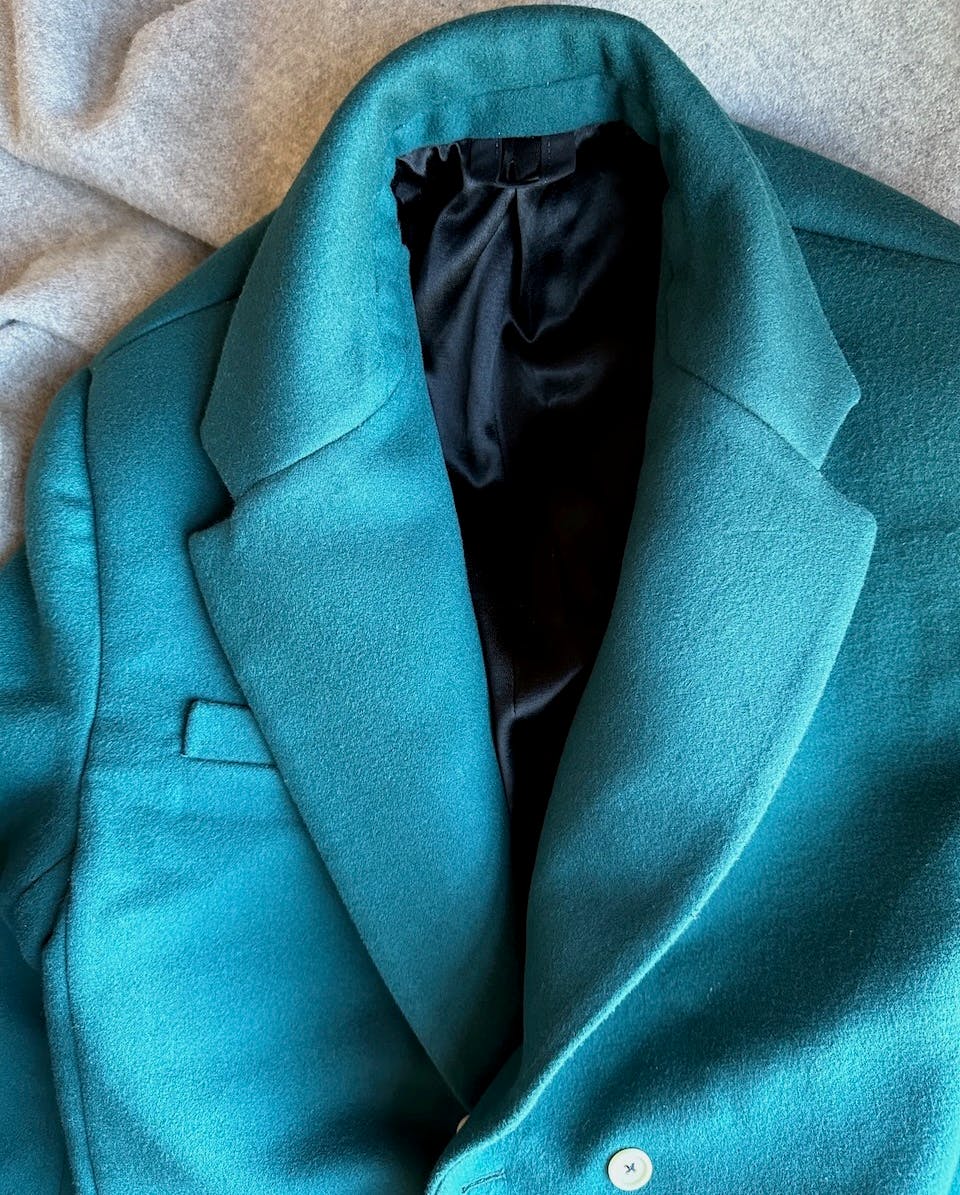My makes - VikiSews Bernard Coat
I made the Bernard Coat by VikiSews, a "men’s semi-fitted double-breasted coat with a straight silhouette". The pattern is drafted for European sizes 38-54, or chest widths of 34 5/8" - 47 1/4" (88-120cm).
I made the size 38 in the shortest height (170-176cm, 5'7"-5'9"). My alterations for my style preference:
- Made it knee length. Moved the vent up 1 1/2" and chopped off 5" from the hem.
- Squared off how the side pieces get larger as it goes from the waist down to the hem.
My alterations to make it fit me:
- Moved the front angled pockets up 1 1/4". My hands still barely reach. Should've done 2 1/2".
- Raised the sleeve up 1 3/4"
- Moved shoulder in by 1 1/4"
- Reduced 1" height from the lining, which still kept plenty of ease (more on this below)
I chose 3/4" thick for the shoulder pads.
The PDF you're sent only includes the size you ordered. You better hope you fit the pattern's expected body ratios because you cannot grade between sizes.
There are a couple definite errors in the PDFs. The sleeve buttons are spaced 1" apart despite the pattern's own photographs showing the 1/2" buttons butted next to each other. More worryingly, I think the lining PDF I received was not actually matched to the height of my main fabric PDF. The lining body pieces are 1" taller than the main fabric pieces. The main fabric also gets shortened by 7/8" relative to the lining because of the hem! When I constructed as-is, the lining drooped below the hem. I cut off 1" from the lining to keep 7/8" for ease.
For digital pattern alterers or projector sewists, the PDF isn't in coherent paths or segmented into layers so it takes time to get it in a workable state. Also, the pocket lining pattern pieces are included in the main fabric PDF rather than the lining PDF. Perhaps the arrangement was optimized to save paper for those who print.
The instructions initially seemed okay, but they grow insufficient as the pattern progresses. There were verbose descriptions for the easiest steps but very little said about the trickiest steps. Each step had an accompanying photo, but often the photo was taken at the wrong stage of the step to be helpful. For multiple steps on the vent construction and lining attachment I found the instructions to be unhelpful. I had to work out a few parts myself, and I sewed a couple samples to double-check that my intuition was right.
Most frustratingly, on the last real step, there is zero mention about how to attach the lining to the hem and the back vents. Truly not one word or picture.
While I'm generally resourceful at learning things myself by compiling several online/book sources, I really struggled to find any that neatly matched the particulars of this coat's design and prior construction order.
Any coat like this will be a difficult project no matter what. Plenty of parts were difficult due to my general "intermediate" skill level and my picking an ambitious project.
If you've never made a similar lined garment, I would exhaustively search for other options before landing on this pattern. The poor descriptions and unhelpfulness of the photos on the key steps was deeply frustrating. Even in the best case scenario, this project will take several days. The stakes start to feel really high near the end because you've invested so much time into the project, but when you most need them, the instructions leave you to fend for yourself.
If you have already constructed a similar coat, then go right ahead with this pattern. Follow your own construction order. Definitely make a muslin as a couple aspects seemed highly questionable (at least for this size). Before finishing the hem, double-check the lining length to see if you'll also need to reduce it to avoid it drooping below the finished hem.
Ultimately there are so few coat patterns and "menswear" patterns in general, so I am still thankful for this pattern. I ended up with a coat in the style and fit I was aiming for with better quality than something I could pick up at a store. But I eagerly await the day someone else releases a similar lined coat pattern so that I can finally learn how to actually do the key parts I had to fudge.
